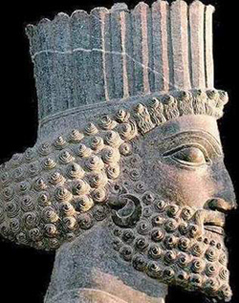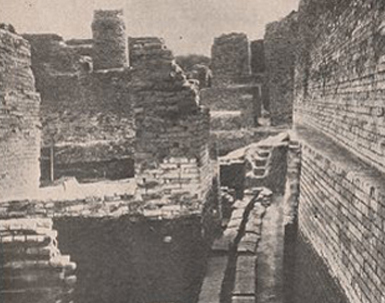
Introduction |
Geography |
History |
Communication |
Beliefs |
Society |
Economy |
Government |
Technology |
Links to Other Websites |
|
|
 |
History |
|---|
People have lived continuously in the area we call India for at least 30,000 years. Archaeologists believe these were Cro-Magnon type Homo sapiens and may actually have been there much longer. They know for sure, however, that people settled into farming communities about 7,000 years ago along the Indus River. These villages eventually grew into cities and formed what is known as the Indus River Valley civilization. Sometimes it is called the Harappan civilization because one of the main cities was called Harappa. The other major city was Mohenjo Daro and 100 others have been discovered as well.
From these early people, India has grown into the second most populated country in the world. Through these 5,000 years of history, India has had many different kinds of government, belief systems, and economies. It has changed from having a Paleolithic, Old Stone Age, technology to one that rivals the most advanced technology anywhere in the world. Yet India still maintains its ancient ways of living in many places.
Below you will find a timeline of Indian history from the Indus River Valley up to present day. Look at it carefully. Answer the questions on the worksheet in the Learning Center based on information given on the timeline or click here for the questions.
Many of these dates are approximate meaning that historians and archaeologists have not agreed on the exact timeline of Indian history.
5,000 BCE Early farming villages form along the Indus River
2,500 BCE Indus River Valley civilization of Dravidians flourishes; Mohenjo Daro and Harappa are two major cities
1600 BCE Aryans arrive in north through the Hindu Kush from central Asia; settle in the area now called the Punjab
1500 BCE Indus River Valley civilization comes to an end perhaps due to climate changes, flooding or river changes, or the Aryan people
900 BCE Aryans extend civilization into the Ganges River Valley
566 BCE Siddhartha Gautama, founder of Buddhism; born as a prince, attains enlightenment, and teaches new
religious ideas
400BCE Persians invade northwest India
327BCE Alexander the Great conquers Persia and beyond the Indus River; his army refuses to go further because of the mosquitoes
319BCE Chandragupta Maurya begins the Maurya Dynasty
274BCE Asoka the Great, grandson of Chandragupta, rules the Maurya Dynasty and spreads Buddhism to all of India and beyond
232BCE Asoka dies and the Maurya Dynasty slowly crumbles
For the next 400 years or so and into the Common Era (CE), many small kingdoms throughout India warred with each other and ruled at different times.
320CE Beginning of the Gupta Dynasty: science, literature, and arts flourish
647CE Gupta Empire ends after years of invasion from the Huns and other barbarian armies
During the 600s to the 1500s, various Muslim rulers ruled India. The religion Islam was brought to India by Arab traders and later by a series of invasions and wars.
1526CE Muslilm Moghuls took over the throne and Barbur claims himself Emperor of India establishing the Moghul Empire
1556CE Akbar the Great, a free thinking Moghul, rules with tolerance for other religions in India
1627CE Shah Jahan rules as Moghul emperor; builds the Taj Mahal for his wife who dies in childbirth
1666CE Shah Jahan dies; his son takes over and the downfall of the Moghuls begins due to his harsh rule
For the next two hundred years or so, there were warring kingdoms, the Persians took control again, and French, Portuguese, Dutch, and English traders had an impact on India.
1857CE India held its First War of Independence to fight the invading British East India Trading Company who was taking control
1947CE India wins independence as a colony of Great Britain, but the country is split into two nations: India and Pakistan and the region called Kashmir is still in dispute.
Since 1950, India has been called the Republic of India and operates as a federal republic parliamentary democracy.

